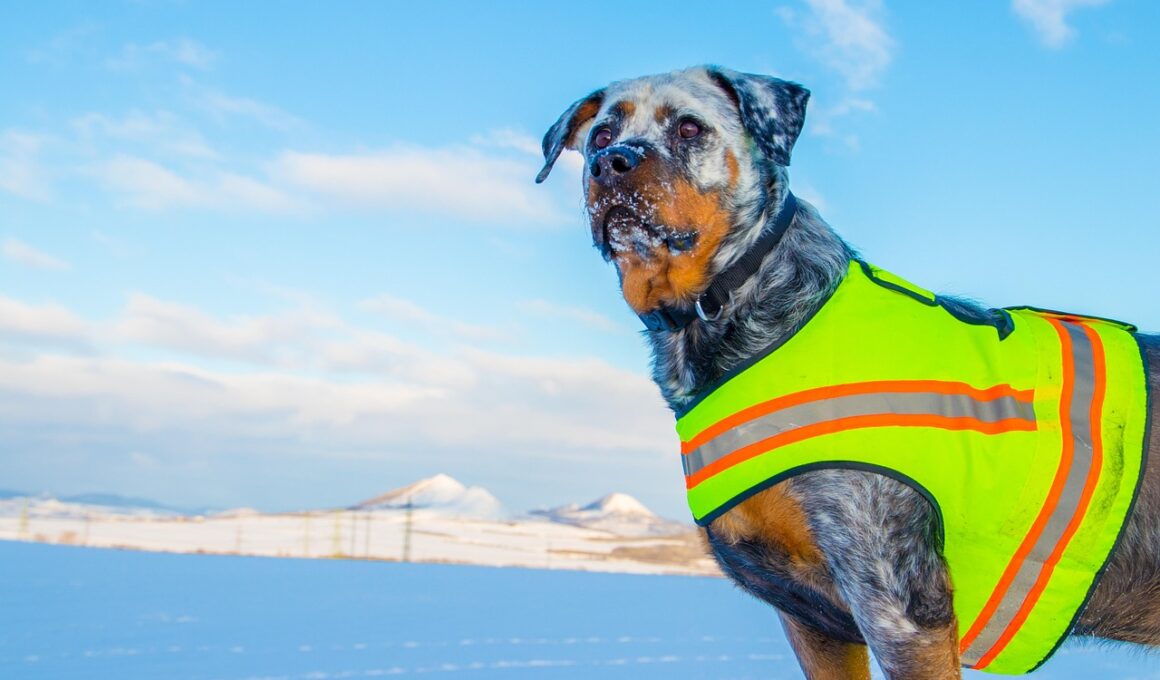Top Safety Precautions Every Dog Photographer Should Know
When stepping into the realm of dog photography, safety should always be a top priority. While capturing adorable moments of dogs can be exciting, it’s essential to ensure their well-being during the process. Start by assessing the environment where you’ll be shooting. Are there any hazards such as sharp objects, bodies of water, or other animals nearby? Always familiarize yourself with the space before bringing in the dog. This precaution ensures that unexpected dangers can be avoided. Second, consider the dog’s temperament. Not all dogs comfortable around people or other pets; therefore, knowing the animal’s characteristics can help you plan effectively. Furthermore, you should remain alert, watching for signs of stress or discomfort, as this can affect their ability to pose nicely. Always have water on hand to keep the dog hydrated, especially if shooting in warm weather. Make sure you’re prepared to manage the dog’s energy levels, taking breaks as necessary. Always remain patient, as dogs may need time to adjust to their surroundings. In doing so, you’re not only contributing to a successful photo shoot but ensuring a safe and enjoyable experience.
In addition to monitoring the environment and the dog’s behavior, ensure that proper equipment is used during the shoot. Using a leash is often necessary, particularly when photographing dogs outdoors. A good leash helps control the dog and ensures they don’t run into any potential hazards. Retractable leashes can be useful, but ensure they’re not distracting or dangerous. Always secure the camera strap around your neck to prevent accidental drops or potential injury if the dog were to tug it away. Using a leash allows more freedom for capturing candid moments, while maintaining safety. You might also want to consider investing in a harness, especially for active dogs prone to pulling. If you shoot in public places, be respectful of others and adhere to local pet policies. Ensure that the dog is up to date on vaccinations and well-mannered in public settings. Keeping your equipment and surroundings safe and clean is crucial. Moreover, don’t forget to check the lighting conditions you’re working in; proper lighting ensures clear and vibrant images, and avoiding direct sunlight can help with dog comfort.
Health and Safety First
When photographing dogs, ensuring their health and safety should never take a back seat. Begin by ensuring all dogs are healthy enough for the physical activity involved in a photo session. Some dogs may have disabilities or health issues that limit their mobility. Always consult with the dog’s owner to understand any limitations the dog might have and adjust your shoot accordingly. Furthermore, be cautious when dealing with dogs that exhibit anxiety or aggressive tendencies. Understanding these traits is vital for a safe working environment. Additionally, ground-level shots can be captivating, but always be mindful of how you’re positioning yourself around the dog. Avoid creating a scenario that may cause fear or discomfort, as dogs can sense your energy. Bring basic first-aid supplies, just in case minor injuries occur, both for dogs and humans. A simple cut or scrape can happen in an instant. Evaluating each situation before it escalates can be key; hence, remaining observant throughout the shoot is indispensable. Remember, dogs have different reactions; maintain a flexible approach to facilitate an optimally safe experience.
While it’s easy to focus on achieving the perfect shot, remember to prioritize breaks during the session. Just like humans, dogs can easily become overwhelmed or tired, especially during prolonged shoots. Scheduling regular breaks ensures the dog remains engaged and enjoys the experience rather than becoming stressed. Provide them with fresh water, a chance to rest, and some playtime during these intervals. Recognizing the signs of fatigue such as excessive panting, droopy eyes, or disinterest in the session can be helpful. Always maintain a calm atmosphere as you engage with the dog; allowing them moments to relax helps capture their authentic personality. Having toys or treats at hand can serve as motivation and create playful moments. When the dog enjoys the process, it not only enhances the overall experience but also produces better images. Taking breaks to regroup and refocus will reflect positively in the quality of your photographs. Thankfully, a satisfied dog translates to more natural and beautiful shots, which is the ultimate goal for any dog photographer. An environment that prioritizes comfort enhances creativity and yields amazing photos.
Protecting the Dog’s Comfort
Aside from breaks, always consider the weather conditions during your dog photography sessions. Extreme temperatures can adversely affect a dog’s comfort and safety. Always check beforehand to determine if the weather is suitable for outdoor photography. Hot days can lead to overheating, while chilly conditions may cause discomfort. Aim to shoot during the cooler parts of the day, like morning or evening, during hot conditions. Keeping an eye on the dog’s behavior in response to temperature shifts is also critical. If a dog appears restless or uncomfortable, it’s time to halt or adjust your plans. Additionally, if shooting outdoors, utilizing shaded areas can provide a comfortable space. On the other hand, during rainy or wet conditions, consider using waterproof equipment and avoiding muddy areas to protect both the dog and your gear. Invest in some clean towels to dry them off if they do get wet. It’s best to provide an optimal environment to enhance the photography experience while prioritizing the dog’s safety. Moreover, assessing the day’s conditions allows for creative angles and settings without compromising the dog’s comfort.
As a responsible dog photographer, always educate yourself regarding the diverse dog breeds you may encounter during your sessions. Different breeds have distinct characteristics, behaviors, and health issues. By learning more about the specific breed, you can ensure a more tailored approach. Dogs react differently to various stimuli, and knowing what to expect allows you to adapt your techniques accordingly. Some breeds may be more active or skittish than others, impacting your photographic approach. Spend time observing their interactions and behaviors; this knowledge enhances your rapport with the animal. A strong connection with the dog can make a significant difference in the quality of the photographs. Take a moment to speak with the owner about the specific recommendations for their dog to capture the best shots. This level of care can greatly influence the outcome of your photo session. It’s always important to factor in breed considerations when planning your shoot—enhancing safety means working with the animal’s unique needs. Each session can be a learning experience, adding depth to your understanding of canine companions.
Final Thoughts on Dog Photography Safety
In conclusion, prioritizing safety in dog photography is crucial not only for the success of your shoots but also for the welfare of the animals involved. Always stay aware of your surroundings, be prepared with essential equipment, and adapt your approach based on the unique needs of each dog. Furthermore, maintain open communication with the dog’s owner while keeping comfort and relaxation at the forefront. Whether you’re an experienced photographer or just starting out, adopting these safety tips will prepare you for a variety of situations. The balance of creativity and safety enriches your experience and that of the dog. Remember, the goal of capturing those candid moments remains paramount. When you place the dog’s comfort and security first, you’ll find that not only does it aid in creating stunning images, but it also fosters a joyful and memorable experience for everyone involved. In the dynamic world of dog photography, having a reliable safety checklist ensures you’re ready for every adventure, leading to unforgettable captures of delightful dogs in their most authentic moments. Always be vigilant and emphasize a positive environment.
By incorporating these safety tips into your dog photography sessions, you can create an enjoyable and effective environment. This not only enhances the photogenic opportunities but solidifies your status as a responsible pet photographer. Always make sure to remain educated on the breeds you are working with, invest in the right equipment, and foster a relationship with each dog for best results. The ability to capture beautiful images arises from understanding both the art of photography and the emotions of the dogs. Developing this balance means images that truly reflect each dog’s personality and spirit, celebrating their unique attributes. By considering every aspect of a dog’s comfort and safety, you are paving the way for your success and creating lasting moments that dog owners will cherish. Being an attentive photographer ensures dogs are not only subjects but participants in a joyful experience of exploration. It’s these authentic moments that resonate deeply with viewers and create lasting impressions. Thus, becoming a better dog photographer comes with an obligation to prioritize not just creativity but also the happiness and health of your furry subjects.


